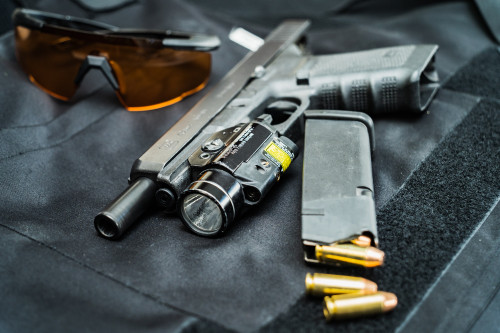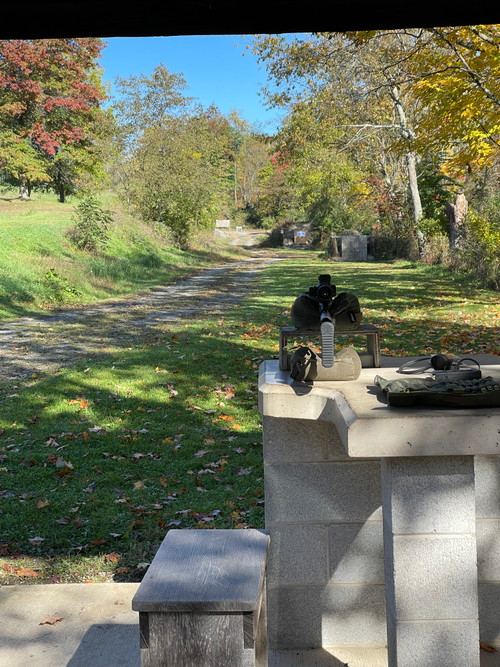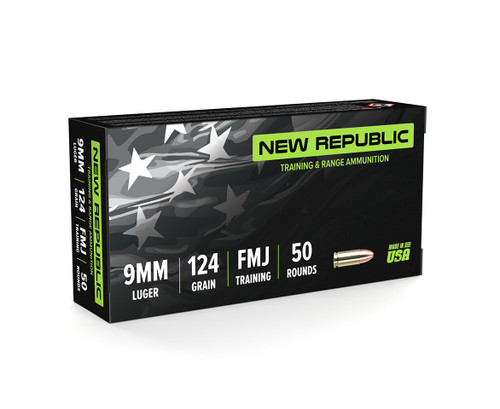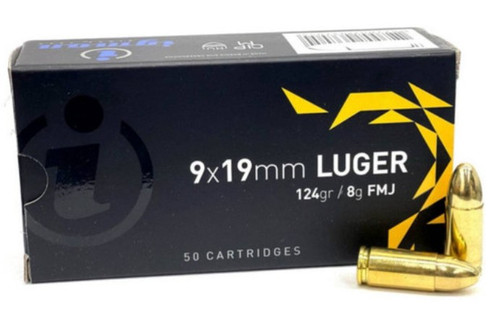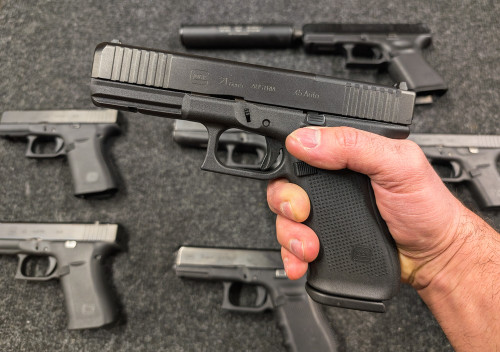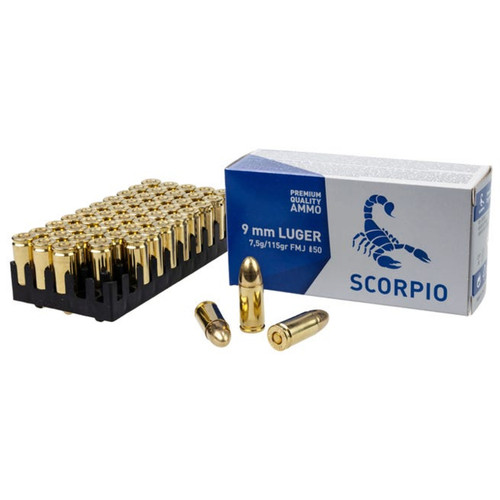The .30-06 (pronounced “thirty ought-six") has been laying low all types of critters for more than 115 years. Its blend of power, accuracy, and range make for a lethal combo on the battlefield and in the woods. That said, it is a fairly old cartridge. What is its relevance today, and just how far can it reach?
First, a distinction needs to be made before we throw out numbers. There is a key difference between vintage/surplus .30-06 that is made for the M1 Garand (the iconic battle rifle of US Troops during WWII which was also used in Korea and Vietnam), and newer, high-pressure .30-06 that’s designed for modern arms and hunting. Surplus Garand ammo is most often the Greek “HXP” variety. It’s referred to as HXP because that’s stamped on the rim along with the date of manufacture. HXP is plenty powerful, but has less juice than modern hunting ammo.
While the M1 Garand traditionally fires a 150-grain full metal jacket (FMJ) round at roughly 2,700 fps, some modern .30-06 hunting ammo slings a 150-grain bullet at north of 3,000 fps. Squeezing more than 300 fps out of the same cartridge is no small feat. This also comes with an increase of pressure, which can beat an M1 Garand to death. Don’t try it.
All that said, when zeroed at 100 yards, an FMJ .30-06 bullet traveling at 2,750 fps (like the HXP) drops 4” at 200 yards and 14.5” at 300 yards. When you bump the velocity up to 3,000 fps like some hot hunting loads offer, the drop is 3.1” at 200 yards and 11.5” at 300. That’s a difference of 3” at 300 yards. With that kind of drop, shooting an iron-sighted rifle like a Garand, it’s best to leave 300 or so yards as an effective range for the average shooter.
With scoped hunting rifles and modern ammo, however, you can reach out a good bit farther. Let’s take a look and see just how far a .30-06 can still perform in different situations.
America’s Cartridge
The .30-06 has served sportsmen and servicemen admirably for more than 115 years. It’s a little long in the tooth, but still relevant because it kills stuff dead. It gets its name from the bullet size (.30 caliber) and the year it was adopted (1906). The first .30-06 loads featured a huge, heavy 174-grain bullet, but that was replaced by the classic M2 150-grain spitzer (meaning pointy) bullet load that offered greater velocity and effective range.
The .30 caliber has been popular in the US for a long time. Why? Mainly because the government (and troops) like the .3” holes it puts in targets. For the same reason, many sportsmen today still opt for some flavor of .30 to quickly and ethically take down game.
The most common guns that are chambered for the .30-06, outside of modern bolt-action hunting rifles, are the aforementioned M1 Garand, its predecessor the M1903 Springfield, and the Browning BAR. Yes, the BAR is the Browning Automatic Rifle. However, in this case, it’s referring to the autoloading hunting gun. “Automatic” in this sense means autoloading, not automatic firing.
There are a handful of cartridges that nearly every bolt action is chambered for, and the .30-06 is one of them. Many are budget offerings that can be found at online retailers and Walmarts across the country.
The ubiquitousness of the .30-06 also crosses price points. It’s offered as a chambering for the cheapest and most expensive hunting rifles alike. Why? Because it just works on so many different critters.
Is It for Boomers Only?
That’s a definitive NO. The .30-06 is mainly for hunters, which we know are found in every generation. Still, if you’re comparing it to the newest, state-of-the-art, Buck Blaster cartridges on the market today, the 30-06 still holds its own. While it may have some years on it, it’s still got a lot to offer modern hunters.
For instance, the Hornady 165-grain Superformance .30-06 slings a 165-grain bullet with 3,200 ft.-lbs. of energy. That’s a lot of mojo, especially considering state fish and wildlife agencies (such as Colorado’s) recommend a minimum of 1,000 ft.-lbs. to kill a deer and 1,500 to kill an elk. By comparison, a 129-grain Superformance load in the uber-popular 6.5 Creedmoor boasts 2,493 ft.-lbs., 700 shy of the .30-06.
“What about the bullet drop at 1,000 yards?” Okay, but how often does the average shooter visit the 1,000-yard range, much less 500? Or even 300? How often does he shoot deer beyond 200 yards? The fact of the matter is this: as an extremely conservative estimate, 90% of deer (probably more) are killed at less than 200 yards. At that range, bullet drop is irrelevant and you want to drop as much energy on target as possible. That’s a win for the .30-06.
A close cousin to the ‘06 is the .308 Winchester. The .308 tried to replicate .30-06 performance in a shorter case, yielding short-action bolt guns and more compact semi-auto battle rifles, the M1A and M14. The .308 makes it most of the way there, with a 150-grain Superformance load seeing 3,000 fps and 2,007 ft.-lbs. of energy.
We’ve mentioned the Hornady Superformance load, but the .30-06 is so popular that there are many, many different loadings for it. You can get factory-loaded ammo with bullets weighing as little as 110 grains all the way up to 220. That’s a huge spectrum that covers everything from prairie dog busting to walloping big game in North America as well as plains game in Africa. This is versatility that the 6.5 Creedmoor and .308 can’t touch.
Most hunters and shooters stick with 150- and 165-grain offerings because they deliver the best blend of performance and versatility with average recoil. Heavier bullets and faster loads kick harder, but for those who are recoil shy, reduced-recoil loads are available.
Another advantage of the .30-06 is that ammo is found everywhere. If you dropped into a wilderness hunt in the middle of Alaska and forgot your ammo, there’s a good chance a gas station or general store would have at least a couple boxes of .30-06. If you’re toting the latest and greatest Whizbang Deer Whacker cartridge, you might be out of luck.
.30-06 Ballistics
Let’s take a deeper dive into bullet drop and ballistics to see how the old .30-06 really shakes out. We know that there’s a great many loadings offered for it, most of them hunting-specific. Here’s a table with velocity, energy, and bullet drop for a couple .30-06 and other popular rifle calibers. See for yourself why your granddaddy’s Model 70 has still got the goods in the woods.
| .30-06 vs. Popular Cartridges | |||
|---|---|---|---|
| Velocity at muzzle (fps) | Energy at muzzle (ft.-lbs.) | Drop at 300 yards (100-yard zero) | |
| .30-06 Springfield, 165-gr. SST | 2,960 | 3,210 | -11.5” |
| 6.5 Creedmoor, 129-gr. SST | 2,950 | 2,493 | -11.5” |
| .308 Winchester, 165-gr. SST | 2,840 | 2,955 | -12.9” |
| .243 Winchester, 95-gr. SST | 3,185 | 2,150 | -10.2” |
| .270 Winchester, 140-gr. SST | 3,090 | 2,968 | -10.1” |
| .30-30 Winchester, 140 gr. Monoflex | 2,465 | 1,889 | -21.2” |
Source: Hornady.com ballistics calculator
What do these numbers mean in the real world? In a nutshell, they mean that the .30-06 has more than enough power for most hunters. The kinetic energy that a modern .30-06 delivers at roughly 3,000 fps is going to be devastating for everything from a gerbil to a giraffe. It has even been known to take down elephants in the past, but that’s a very illegal activity these days.
So what is the effective range of a .30-06? Just how well will a modern, high performance round in this caliber reach out and touch something? Well, the .30-06's lesser-powered cousin the .308 has oodles of ballistic data on ranges out to 1,000 yards and beyond. Plus, the .308 has successfully served in a sniping capacity for decades. While the .308 groups better at distance, it’s still fair to say that the .30-06 is every bit as capable in terms of energy as the .308 out to 1,000 yards and then some.
Why Is the .30–06 Good?
You’d be hard-pressed to find a more proven big game killer than the .30-06. Sure, many folks shot the .30-30 back in the day, but the .30-06 is older, more powerful, and therefore can more effectively take on a wider range of game.
For the level of performance you get, the .30-06 is also one of the best values in big game hunting cartridges. You can find decent hunting .30-06 for as low as a buck a round, whereas the darling 6.5 Creedmoor commands $1.50 minimum. Pricing of the .30-06 is on par with its peers, the .243, .270, and .308.
The .30-06 is also an extremely reliable cartridge on two levels: the first is in ballistic performance. With more than a century of history, the .30-06 has been on the forefront of bullet development for much of that time. The .30-caliber is always innovated and improved upon because they can be used in so many popular .30-cal cartridges like the .30-06, .308, and .300 Win Mag.
The second aspect of the .30-06’s reliability is its function in both bolt-action and semi-automatic (heck, even fully automatic) guns. This is owed to the design of the case, which is tapered ever so slightly. Yes, the bullet is tapered, but the brass is as well. This makes feeding from a magazine and into a chamber much easier, smoother, and more reliable. This is critical when you’re at war and depend on that next shot, but it’s also important when you muff a shot due to buck fever and need to slam another one home to drop that trophy.
.30-06 by the Load
Now that you’re totally sold on the venerable .30-06, let’s dissect its versatility into the ideal loads for different shooting goals.
150-165 Grain
If you’re a deer hunter and will only ever shoot deer, a 150- or 165-grain load will serve admirably. Any lighter and you risk under-penetration. On the other hand, you might “ice pick” your quarry if you use heavy 200-grain bullets. Ice picking is what a FMJ round does when it travels straight through; it leaves a neat, clean, hole much like an ice pick would if it were thrust into something. Heavy bullets are meant for big, tough-skinned critters like bears and might not expand on a 130-pound whitetail to leave a neat .30-caliber hole and nothing else. Sure, it’ll die, but not until after it runs a few miles.
180 Grain
If you live in bear country or hunt elk and moose, think about stepping up to a bonded 180-grain load. These bullets penetrate deeper and are more likely to remain intact as they pass through shoulder bones. The jacket is bonded to the core, which yields a more rugged bullet that stays intact as it passes through a critter, giving you a better chance at a complete pass-through shot.
200+ Grain
If you’re on safari, go with one of the specialty offerings in the 200- or 220-grain range. Most shots are closer than you might think, which makes bullet drop irrelevant. You’ll want every grain you can when a trophy kudu is in your sights. African critters are tough!
Long Range Shooting
If you’re into long-range shooting and hunting, a middleweight bullet with a high ballistic coefficient (BC) is your best bet. Ballistic coefficient measures how aerodynamic a bullet is, which translates to how well it cuts through the air and bucks crosswinds. It’s a measure of drag as well. Bullets with a higher BC are more aerodynamic and experience less drop at distance and also resist wind better. There are several loads made specifically for the long-range shooter, and most all offer excellent terminal performance. This load has a polymer tip that makes the bullet even more aerodynamic in flight, extending range further.
Short Range Shooting
For a short-range thumper in thick brush, go with a soft point. It’s a proven design that delivers massive energy deposit immediately upon impact. With .30-06 velocity, they never fail to expand. Soft points also happen to be some of the most affordable hunting bullets there are, and are available in a wide variety of weights.
Best Scope for a .30-06
You might be a marksman with iron sights, or you might be really bad. Either way, the effective range of a .30-06 doesn’t matter if you can’t clearly see what you’re aiming for. Mounting a scope is your best bet for medium-to-long range hunting. So what kind of scope should you get for your .30-06?
When asking about the best anything, the answer will almost always be “it depends.” In the case of the best glass for a .30-06, you need to ask yourself (honestly) how you'll most often be using the rifle. If you’re only taking snap shops at less than 50 yards, you won’t need much magnification (if any at all). If you’re stretching it out past 300 yards, you’ll want some more zoom.
3-9x for Most Shots
The classic do-all scope that’s also a good match for this classic cartridge is a 3-9x scope. The objective size can be whatever you like, but try to shoot for a main tube diameter of 30 or 34 millimeters as these let in more light than a 1” tube. A big tube “gathers” more light and permits you to see better in low light conditions (like pre-dawn and after dusk).
LPVOs for Long Range
If most of your hunting is done at 100 yards and in, a low-power variable optic (LPVO) such as a 1-6x, 1-8x, or 1-10x would work nicely. If you hunt in open prairie or fields and see shots longer than several hundred yards, think of using 5x as a base magnification. The upper end will be dictated by your wallet, but in general, don’t be afraid of using less power. You’ll have a wider field of view at every setting and will be able to locate game faster when looking through the scope. In hunting, the goal is not to shoot a tiny group. If you can hit the proverbial pie plate (at whatever distance), you’ve done your job. An inch or two up, down, left, or right doesn’t matter when you’ve double-lunged your quarry.
Choose the Right Reticle
Because most .30-06 guns are bolt-action hunting rifles shot at stationary or slow-moving targets, you probably don’t need a huge Christmas tree reticle that compensates for movement, wind, and the like. A scope you can dial in is beneficial if you’re shooting at distance, but for the most part a traditional crosshair does the trick for the vast majority of shooters.
One thing that’s advantageous at dawn and dusk is an illuminated dot in the middle of the reticle. When it’s dark and you throw your crosshairs up on a dark critter, you lose the crosshair intersection and are forced to guess where the bullet will impact to a degree. Scopes like some Leupolds have a FireDot reticle that adds a tiny, glowing dot at the intersection, which is priceless when the light is low.
Sighting in Your .30-06
Now that you’ve got your new blaster topped with a scope, it’s time to hit the range. Instead of wasting precious ammo by chasing a zero, use the two-shot method to sight in a rifle:
First, make sure your gun is unloaded, then mount your scope with proper eye relief. This is where you have the largest, clearest field of view through the scope when it’s shouldered naturally. If you find yourself straining your neck to move your eye closer or further to the scope for a clear view through it, move it.
Next, level the crosshairs. Put the rifle in a rest with a bubble level on the receiver, aimed at the wall. Then put the scope on the gun pointing at a plumb on the wall to get your vertical crosshair perfectly vertical, then tighten the scope.
Now, you can either use a laser boresight tool to make this step easy, or you can do it manually. To do it manually, start by securing your rifle in a rest at the 25 yard line. Securing can mean a buddy holding it down or you strapping it to the rest. This is important. Remove the bolt and sit down behind the gun. Without touching the rifle, look through the bore of the gun and get your target perfectly centered as you look through the bore. Then glance through the scope (without touching the gun) and see if the crosshairs are on the target. If not, move them as close as possible to the center and replace the bolt. You’ve now bore sighted your rifle, and it’s time to sling some lead. Move to the 50-yard line, aim at the bullseye, fire a shot.
It matters very little where your shot’s impact was, as long as it was on target. Secure the rifle back in the rest. Put the crosshairs on the bullet hole and move the crosshairs with the windage (up and down) and elevation (left and right) turrets until they're on the bullseye. If your gun didn’t move as you adjusted the crosshairs, you should be on the bullseye. Take another shot to verify. If you’re not pleased, fine tune it from there.
Just remember the rule of thumb: If you want the bullet impact to move left, move the crosshairs left. The same applies for up, down, and right. It might seem counterintuitive, but that’s the way it is.
Final Thoughts
The .30-06 is one of the most versatile centerfire rifle cartridges ever. It’s served sportsmen and soldiers admirably, and is still a potent game getter. You won’t regret going with the .30-06, and the critters you shoot won’t have any idea they weren’t killed with the latest and greatest whizbang bullet.
But if you’re wondering how far you can shoot your .30-06, you’re likely pushing some limits. To give yourself the best chance of taking down your target in one shot, you need reliable, high quality ammunition from a supplier you can trust. At Pro Armory, it’s our mission to be that supplier for every hunter, target shooter, and marksman we do business with. Our team of veterans and ammo-enthusiasts are here to help you choose the perfect load and find the accessories you need to keep hitting your targets.
If you’re in the market for some quality, proven .30-06 loads or some clear, rugged scopes for your rifle, you’ve come to the right place. Browse our selection at Pro Armory today.

The Best Gun Deals, Coupons and Finds
Sign up for our newsletter to receive regular emails with the best deals, reviews, and updates from ProArmory.






